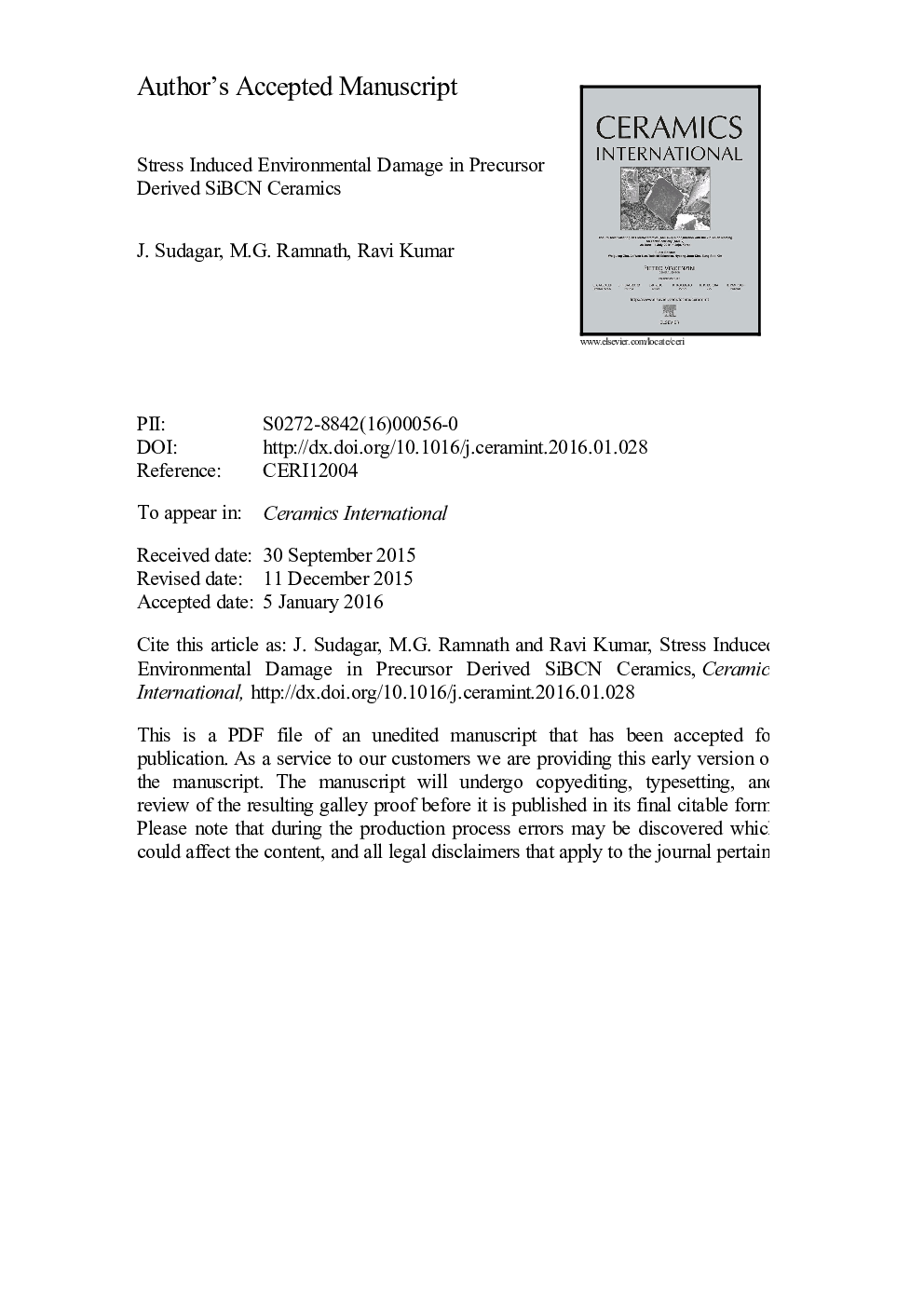| Article ID | Journal | Published Year | Pages | File Type |
|---|---|---|---|---|
| 10624240 | Ceramics International | 2016 | 26 Pages |
Abstract
Boron modified polyvinylsilazane was thermolyzed at 1300 °C under argon atmosphere and subsequently spark plasma sintered at 1600 °C in vacuum. The material was subjected to highly saline and constant vapor pressure environments individually to understand the influence of chemistry in propagating the subcritical cracks. The failure behavior in chloride environment was compared against humid environment using the data extracted from Raman spectroscopy, the thermodynamic characteristics of the environment and the micro-sized pore concentrations. The implications of the subcritical crack growth were derived by plotting ν-KI graphs for each of the samples to clearly distinguish between the effects of the surrounding mediums. The impulse to crack propagation was found to be resistive with variations in degree of crack growth alternating directly with the changes in porosity, surrounding atmosphere and defect density. The rate of energy dissipation and its hindrance at the crack tip were found to be a major player, among others, in reducing the crack propagation rate.
Related Topics
Physical Sciences and Engineering
Materials Science
Ceramics and Composites
Authors
J. Sudagar, M.G. Ramnath, A.B. Kousaalya, Ravi Kumar,
